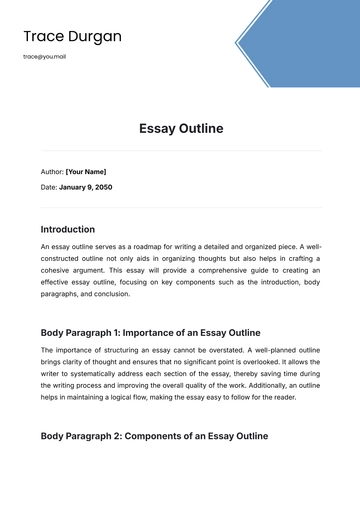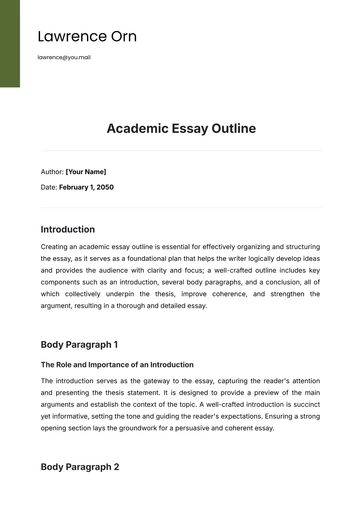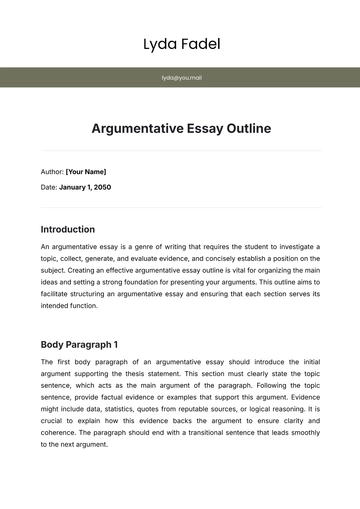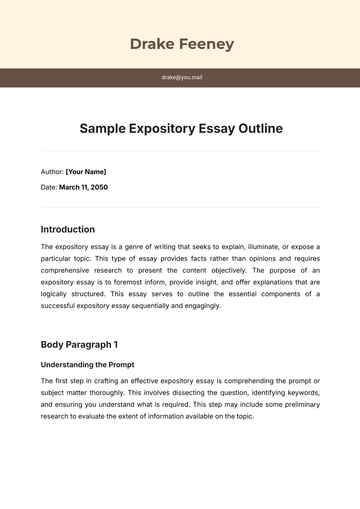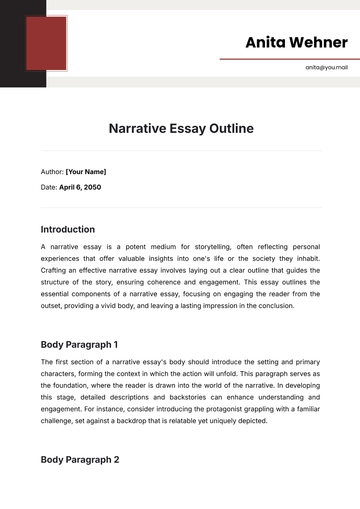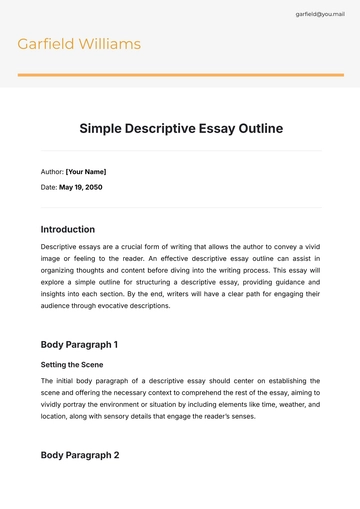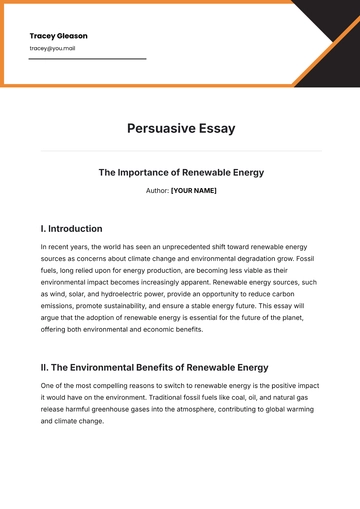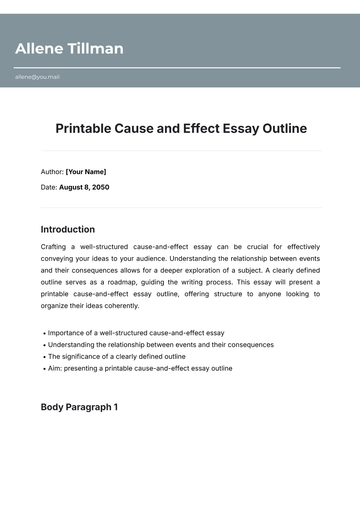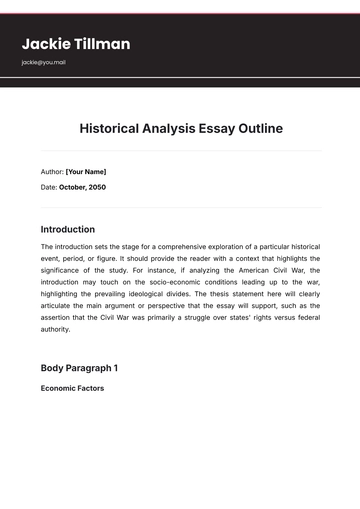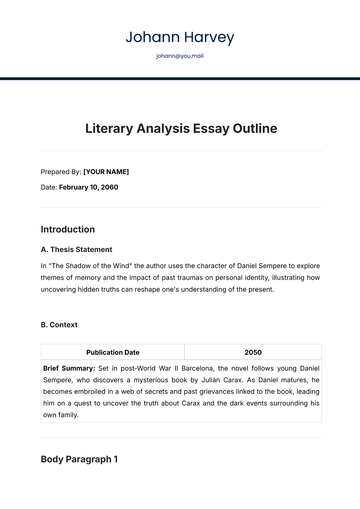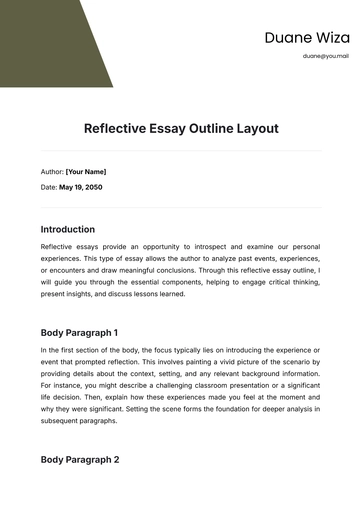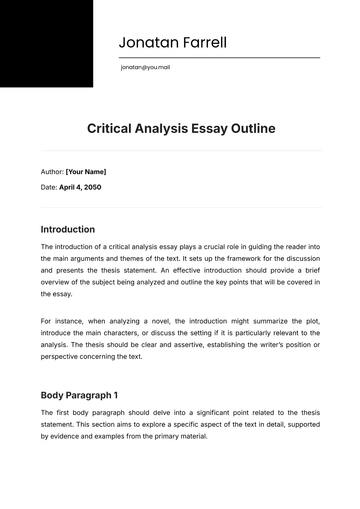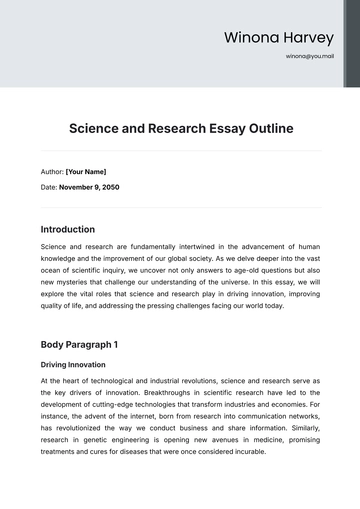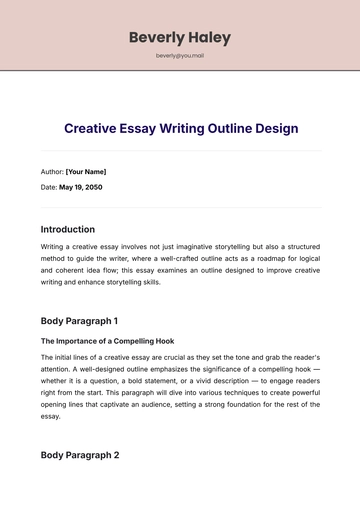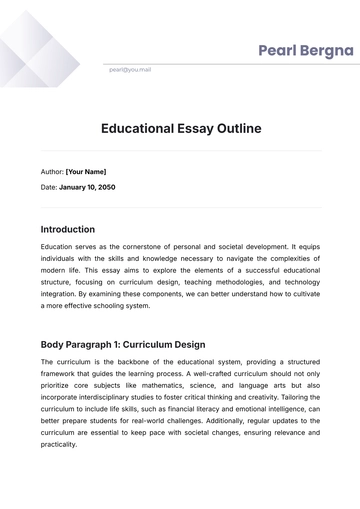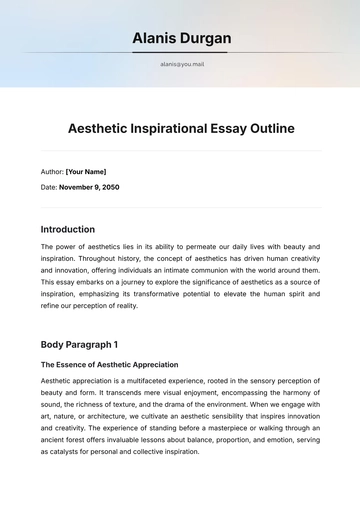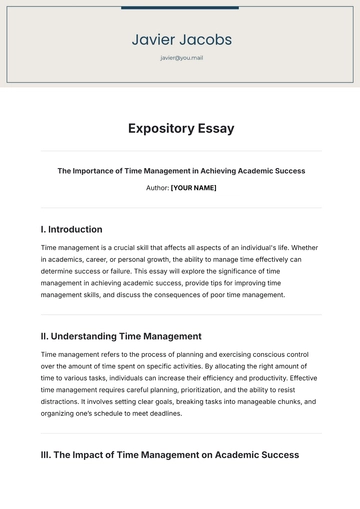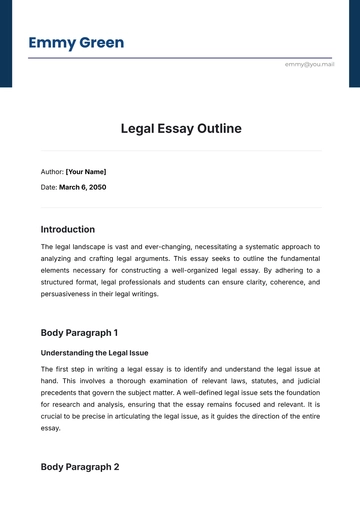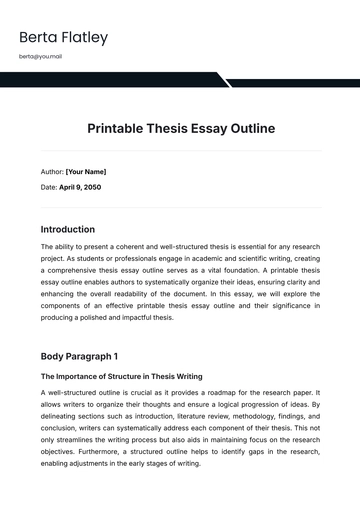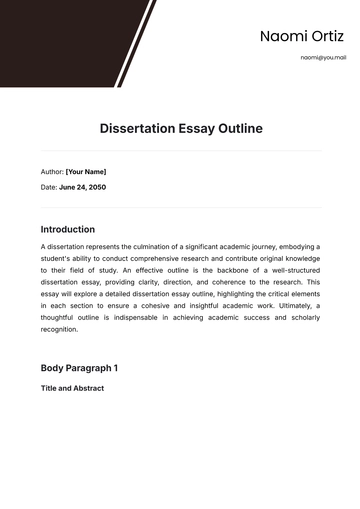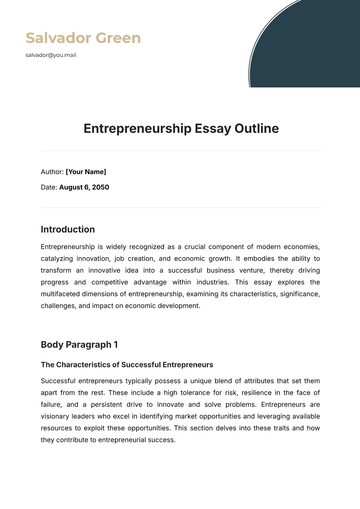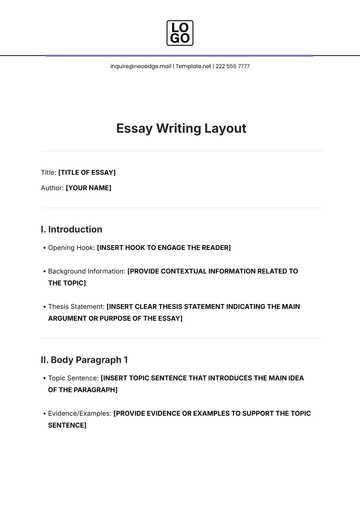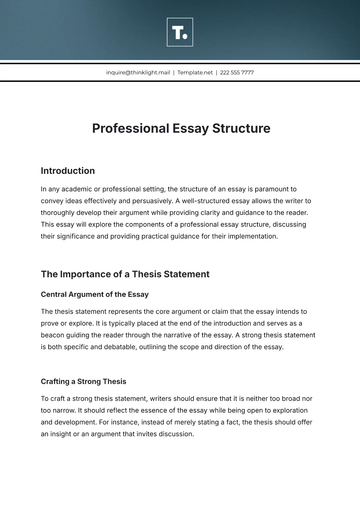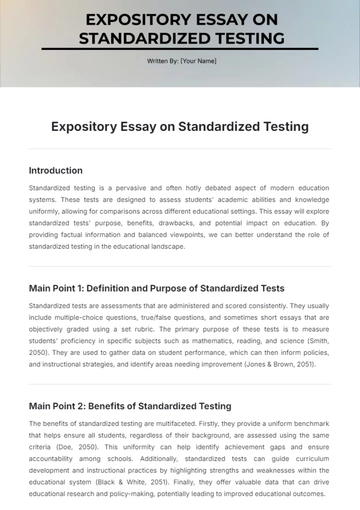Free Expository Essay on Curriculum Design

Introduction
In contemporary education, the design of a curriculum is a complex and multifaceted task that necessitates a thoughtful approach. Curriculum design involves the structuring and organization of educational content to achieve specific learning outcomes. This essay delves into the principles, structure, and methodology behind developing an educational curriculum, emphasizing the significance of goals, content, learning outcomes, and teaching strategies. Understanding the intricacies of curriculum design is essential for educators who strive to create effective and engaging learning environments.
Principles of Curriculum Design
The foundation of any curriculum design lies in a set of guiding principles that inform its development. These principles ensure that the curriculum is coherent, relevant, and aligned with educational standards. Key principles include:
Relevance: The curriculum should be aligned with students' needs, societal demands, and the skills required in the workforce (Tyler, 2050).
Coherence: The content and learning experiences should be logically sequenced and connected, facilitating the progressive building of knowledge and skills (Wiggins & McTighe, 2050).
Flexibility: The curriculum should allow for adaptability to cater to diverse learning styles and changing educational contexts (Ornstein & Hunkins, 2050).
Structure of Curriculum
The structure of a curriculum typically includes several key components that together create a cohesive educational plan. These components are:
Goals: These are the broad educational aims that the curriculum intends to achieve. They provide direction and purpose (Taba, 2050).
Content: This element outlines the subject matter, topics, and concepts that will be taught. The content must be well-organized and scaffolded to support meaningful learning (Posner & Rudnitsky, 2051).
Learning Outcomes: These are specific, measurable statements that describe what students should know or be able to do as a result of instruction (Bloom et al., 2052).
Teaching Strategies: These are the methods and approaches used by educators to facilitate learning. Effective teaching strategies are varied and responsive to student needs (Marzano, 2053).
Methodology of Curriculum Design
The process of curriculum design involves a systematic approach that includes several phases. These phases often follow these steps:
Needs Analysis: Identifying the needs of students, society, and the job market to inform the curriculum content (Graves, 2050).
Design: Developing the framework of the curriculum, including goals, content, and learning outcomes (Print, 2051).
Implementation: Putting the curriculum into practice in educational settings, requires teacher preparation and resource allocation (Fullan, 2052).
Evaluation: Continuously assess the effectiveness of the curriculum through feedback and performance data to make necessary revisions (Scriven, 2053).
Conclusion
Curriculum design is a critical aspect of the educational process, involving thoughtful planning and execution to achieve intended learning outcomes. By adhering to key principles, structuring the curriculum effectively, and following a systematic methodology, educators can develop curricula that are relevant, coherent, flexible, and effective. The ultimate goal is to create a learning environment that fosters student growth, engagement, and success.
Bibliography
Bloom, B. S., Engelhart, M. D., Furst, E. J., Hill, W. H., & Krathwohl, D. R. (2050). Taxonomy of educational objectives: The classification of educational goals. Handbook I: Cognitive domain. Longmans.
Fullan, M. (2051). The new meaning of educational change (4th ed.). Teachers College Press.
- 100% Customizable, free editor
- Access 1 Million+ Templates, photo’s & graphics
- Download or share as a template
- Click and replace photos, graphics, text, backgrounds
- Resize, crop, AI write & more
- Access advanced editor
The Expository Essay on Curriculum Design Template from Template.net is fully customizable and designed to simplify your writing process. Easily editable in our AI Editor Tool, it allows you to tailor content to your specific needs. Ideal for educators and students, this template ensures professional, well-structured essays with minimal effort.
